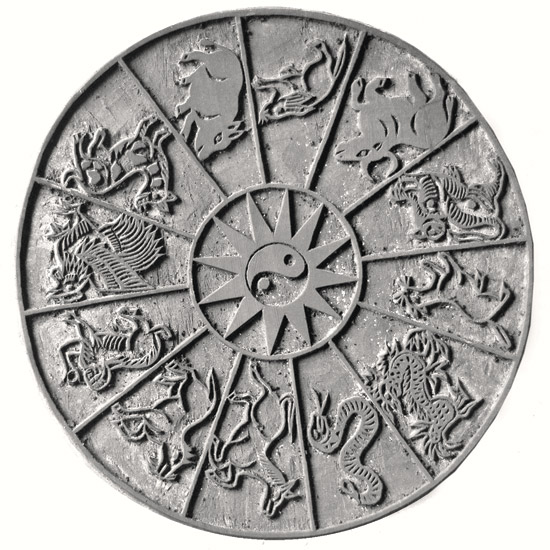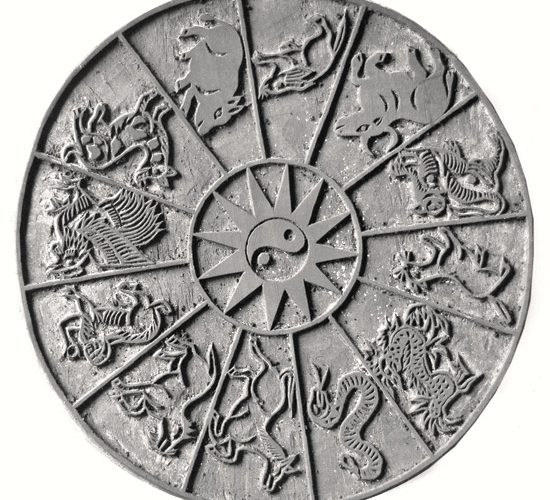(No.1, Vol.5,Jan-Feb 2014 Vietnam Heritage Magazine)
Bronze-block of 12 zodiac animals at
Sinh Village, Hue
Photo: Hoang Huu Tu
2015 is a year of the Goat. The goat is not a very sympathetic animal, because people often use it as a symbol of unpleasant things; in Judaism and Christianity the goat is synonymous with evil, for example. However, among rural animals, goats have a high and rich spiritual value, representing a close and important bondthat yields a strong positive influence on a nation’s cultural life.
Among the 12 Chinese zodiac animals, the goat is the symbol of moderate and mild temper, but no less witty than the others. The goat is one of the sacred animals worshiped by ancient Egyptians because of their important contributions in human life. Many people use the goat as a sacrificial animal. The Egyptians sacrificed goats to evil gods instead of humans.
In Eastern cultures, including Vietnamese, goats are among the three sacrificial animals: goat, pigs and cows; and the six most popular household animals, which also include chickens, dogs, pigs, horses and buffaloes.
In the Western zodiac, the goat is the Capricorn, which is thought to be hard-working and practical.
The goat is a rich and sophisticated symbol. The female’s horn represents fertility. The male represents strength and sexuality, because goats are sexually mighty. A male can mate with a whole herd of females.
Westerners call a sexually insatiable man a satyr, based on the half-man, half-goat from Greek mythology. The Vietnamese call them the goat-blooded, bearded goats, or old goats.
China has many classical references related to goats, notably the ‘goat carriage’ story. A King of Tan, a Chinese Kingdom, used to ride this carriage nightly in his forbidden city, and he would stay the night with the concubine at whose door the goats stopped. So all the king’s concubines stocked young mulberry leaves (goats’ favourite) to put at their door every night, hoping the goat carriage would stop there, or else they would feel cold, lonely and ill-fated. This was related in the ‘Songs of harem sorrow’ of Nguyen Gia Thieu (1741-1798):
Let the fire warm, let the incense burn,
Let the goats stop for my mulberry.
Let not my charms be moss-grown.
Winding is the carriage track…
In Vietnam, children used to love the fun and liveliness of the game ‘blindfolded catching the goat’ (B?t m?t b?t dê).
In his ‘Call to Arms’ (Hich Tuong Si), Hung Dao Vuong also referred to the Tartar emissaries as just some extra phony dogs and goats. He mocked them:
The vultures see not the heaven’s glory,
The dogs and goats have no gentle intent.
In Chinese culture, goats are good-natured animals. People born in the year of the goat are cheerful, sincere, kind, understanding, and quick to share others’ feelings. They enjoy others’ attention too. If fully let grow, those who have an inclination towards art and an aesthetic sense can have become highly creative artists. However, without success in their careers, people born in the year of the goat can become pessimistic and dispirited because they are mostly sentimental and emotional.
People born in the year of the goat are soft and timid but social. They are self-centred and reserved. They don’t like confrontation, conflicts, or ‘collisions’. Nevertheless, they are also lucky in their career and financial matters.
People born in the year of the goat love a quiet life. In a rush situation, others may be stressed, but people born in the year of the goat remain calm and at ease. Being moderate, they can befriends with strong people and know how to ‘leash’ them. They need a highly disciplined environment to fully flourish.

